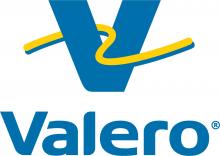35th Center for Chemical Process Safety (CCPS) International Conference
The Center for Chemical Process Safety (CCPS) International Conference is one of five parallel sessions that comprise the Global Congress on Process Safety (GCPS). The CCPS Conference promotes process safety by identifying emerging process safety issues and advancing leading process safety management practices. It is dedicated to managing process safety systematically, locally, regionally and internationally.
2020 CCPS Chairs
Papers are selected by session chairs based on an abstract of 100-200 words. The abstract must offer a brief account of the contents, conclusions, and the relevance to the topic area. Submitted abstracts must include the author, their affiliation, full address, email, and phone number. The papers will be published in the GCPS proceedings.
Topics for this conference include:
CCPS Chair:
-
John Champion, CCPS_chair@aiche.org
Session Topic Descriptions:
Vision 20/20 – Successes from the Last Decade
Almost 10 years ago, CCPS imagined what perfect process safety would look like in the not-so-distant-future. That dream turned into the Vision 20/20 initiative. This session solicits abstracts based on the process safety improvements and successes in industry or a company resulting from implementation or use of Vision 20/20 and similar concepts. What progress has been made? What learnings and accomplishments have resulted? Preference will be given to abstracts that show application of one or more of the five tenets and/or four societal themes of Vision 20/20, but other abstracts describing related process safety improvement efforts or histories are also of interest.
Vision 20/20 – Visions of the Future
After looking back at the impacts of the Vision 20/20 initiative, it is also time to look forward again. Now in the year 2020, process safety programs still have room for improvement. What’s next? What are current and future priorities? How can additional improvements be made? What resources are needed? What are effective approaches? The theme of this session is to focus on what additional initiatives and innovations can enable us to continue working to achieve the goals of Vision 20/20 and improved PSM performance.
Leadership in Process Safety from the Shop Floor to the Board Room
At the foundation of every successful process safety program is Leadership. Strong leadership must be in place at all levels of an organization, from the shop floor to the board room. At the executive level, leadership comes from understanding the importance of process safety, setting the tone, providing resources, and funding initiatives. At the middle levels of an organization, leadership must demonstrate the right behaviors that inspire and engage workers, emphasize safety over production, and provide visible daily leadership. At first line operating levels, leadership must directly influence safe work activities for all personnel. Abstracts that provide a view of leadership in process safety from one or more of these perspectives are desired.
Managing Hazards Throughout the Manufacturing Lifecycle
Much has been written and presented on effective Process Hazard Analysis for an operating facility. But the risk in a facility must be managed throughout the entire life cycle of that facility, from initial concepts through to end-of-life activities. Abstracts are desired that focus on one or more of those points within the lifecycle. Topics include the project PHAs for initial design and construction, ongoing risk management from PHAs and other risk studies, risk management improvement activities, managing risk in times of economic hardship, and evaluating safe shutdown or dismantlement.
Abnormal Modes of Operation – When the Risk is the Highest
Several publications have stated that most significant incidents have occurred during abnormal modes of operation. Abnormal modes of operation include startup, shutdown, temporary operations, emergency, and maintenance activities. Yet much of the focus in process safety is during steady-state operation. Abstracts are sought that discuss the types of programs that are needed to manage these abnormal modes. Topics include what special techniques are used to analyze the hazards, implementation of special procedures and training, managing the slow creep of temporary operations becoming permanent, and any special surveillance and auditing programs.
Building and Maintaining a High Level of Capability in Process Safety
Process safety competency is highly sought after in industry and can take years to cultivate. This session seeks topics that discuss how organizations build the experience and skills within individuals that make them highly effective as process safety practitioners. Topics include developing process safety and operational capabilities, identifying gaps, managing organizational change, managing and retaining process safety resources, enhancing the skills of personnel, mentoring, transfer of knowledge and experience, and effective organizational learning.
Advances and Innovations to Drive Highly Effective Asset Integrity Programs
Reliability and process safety are closely connected: high performance in one usually is accompanied by high performance in the other. Asset integrity is a key driver to both reliability and process safety that necessarily includes effective inspection, test, and preventive maintenance (ITPM) programs to maintain process integrity, process safety safeguards, and other critical systems. This session seeks abstracts that feature advances and innovations that drive improvements in ITPM program design and implementation, staffing needs, RAGAGEP compliance, and related topics needed to maintain effective mechanical integrity programs.
Maximize Value from your Process Safety Learnings
Many times, when we have an incident or near miss, a significant learning opportunity occurs. The same is true for leading indicators such as audit findings, inspections, management system reviews, and other sources of data. This session is interested in how organizations develop, evaluate, and use metrics and other data to capture potential learnings and improve PSM activities. Abstracts should focus on specific activities to obtain appropriate metrics and learnings, analyze and apply data, or identify learning gaps with an intent of improving process safety programs and performance.
Beyond Compliance in Both Covered and Non-Covered Facilities
Facilities covered by OSHA PSM regulations may find that achieving compliance alone is not enough to manage all process risks and achieve excellent process safety performance. Similarly, facilities not covered by OSHA PSM may find that they need to adopt many of the management systems used by covered facilities in order to manage their process hazards and risks properly, while also driving operational efficiency. Additionally, many companies are faced with the challenge of attempting to harmonize OSHA PSM regulations and international regulations across global sites that use similar equipment, processes, and materials. This session seeks abstracts from both the covered and non-covered process perspectives on how process risks must be appropriately managed by moving in some cases beyond strict regulatory compliance and the benefits of doing so.
How to Achieve What Seems Impossible – Zero Incidents
Year after year, the industry is reducing incident rates, which indicates that improvement efforts are having a positive effect. Abstracts are sought that describe what improvement initiatives organizations are successfully implementing to reduce the number and severity of their process incidents. These programs can be in the areas of behavioral aspects such as operating discipline, human factors, safety culture, breaking the abnormal becoming normal mentality, and gaining sensitivity to operations. Abstracts can also focus in more technical areas such as mechanical integrity, PHA, inherently safer design, or any other area where process safety improvements are being made to achieve zero incidents. Preference will be given to those abstracts that show demonstrated improvements resulting from these efforts
GCPS Joint Session: Case Histories
Reviews of process safety incidents provide valuable learning opportunities. This session invites papers to help understand the causes and lessons learned from incidents in the industry with an emphasis on events that have helped define and develop the process safety field over the years.

















